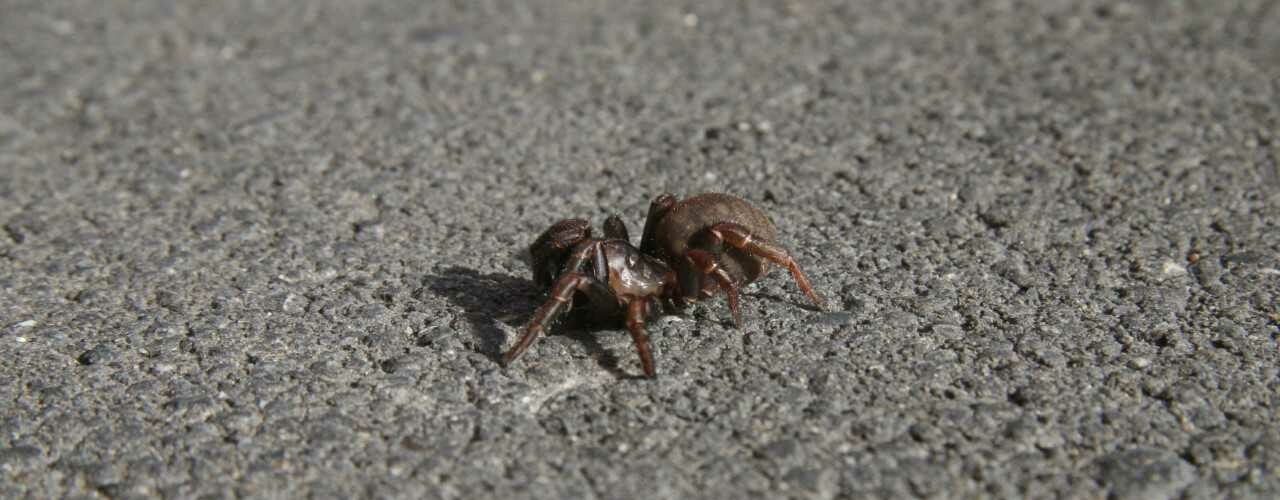The Unexpected Journey of New Zealand’s Trapdoor Spiders

New Zealand is well-known for being the land of small, hairy creatures that live in burrows – like hobbits1, and trapdoor spiders (genus Cantuaria). Perhaps Bilbo and Frodo should have spent less time fighting spiders, and more time sympathising with them. After all, they have a lot in common: neither hobbits, nor trapdoor spiders, are fond of leaving home or embarking on adventures. The spiderlings’ mothers care for them for up to eighteen months, after which the spiderlings leave, walk a couple of centimetres, and build burrows in which they spend the rest of their lives (up to twenty-five years)2. They aren’t great travellers.
Or so I thought. For the past three years, I have been studying New Zealand trapdoor spider ecology and evolution. To start with, I thought they were fragile relicts of the ancient Gondwanan continent, back when Zealandia (the New Zealand continent) first split from the rest of Gondwana. Most of New Zealand’s flora and fauna dispersed there over hundreds of kilometres of ocean, by flying, swimming, rafting, or some other mode of transport3; surely trapdoor spiders could not complete such a challenging voyage?
After collecting Cantuaria spiders from all over New Zealand (except the northern part of the North Island, where they aren’t found), I sequenced their DNA and created a phylogeny (like a family tree) of trapdoor spiders. I also added a couple of DNA sequences from the Cantuaria genus’ closest relatives, Misgolas spp., (found in Australia). I found that Cantuaria gradually became isolated as an endemic New Zealand genus approximately eighteen million years ago, which means it most likely dispersed across the Tasman Sea to a newly emerged New Zealand. However, from its arrival in southernmost New Zealand, Cantuaria dispersed northwards slowly and iteratively – it has undergone very few long-distance dispersals since that one massive dispersal event. Another study, which ran concurrent to mine, found that Cantuaria is the only member of the Idiopidae family to have undergone long-distance dispersal4.
Cantuaria has proven itself to be an extraordinary subject of study. For most of the genus’ history, it has not travelled much. But to set its eight feet on New Zealand, it underwent a monumental voyage. Just like Bilbo in The Hobbit, it undertook an unexpected journey, discovering new lands and making its own mark in history.
This Snippet is a follow-up piece to the feature focused on the beginning of Victoria’s research: https://the-gist.org/2014/02/a-long-walk-or-a-giant-leap/. The research was hosted at Lincoln University, New Zealand, and funded by the Miss E L Hellaby Indigenous Grasslands Research Trust, the Brian Mason Trust, Otago Museum, and the Mohamed Bin Zayed Species Conservation Trust.
Edited by Richard Murchie










